'She took all the risks there were' - truly badass suffragettes you need to know about #Vote100
Arrested, imprisoned, humiliated, force fed, attacked by the press... nevertheless they persisted ??


Arrested, imprisoned, humiliated, force fed, attacked by the press... nevertheless they persisted ??
100 years ago today, on 6th February 1918, the first wave of British women won the right to vote. To celebrate Vote100, here's some of the badass, brave and brilliant women who got us there:
Muriel Matters
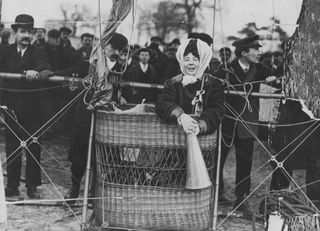
Muriel was an Australian-born journalist who moved to the UK in 1905. In 1909 she took off in a dirigible balloon with VOTES FOR WOMEN painted in enormous letters on the side. Her plan was to fly over London and scatter 56lbs of Women’s Freedom League pamphlets over Westminster while King Edward was there opening parliament.
Unfortunately the weather was so bad that day she got blown a bit off course and ended up Croydon, but her stunt still made worldwide news and helped raise the profile of the suffragette movement. Here she is pictured just before take-off. Go, Muriel!
Flora Drummond, AKA 'The General'
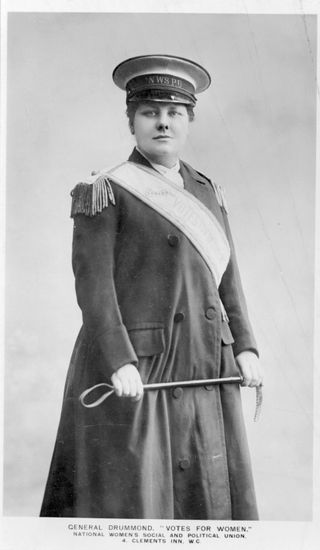
This is Flora Drummond, otherwise known as 'The General.' Drummond was repeatedly arrested for protesting the right to vote, including in her first trimester of pregnancy and after chaining herself to the railings outside Downing Street.

Here she is smiling while being arrested (above) and standing on a boat she'd hired to invite ministers to a Votes For Women rally as they sat on the Westminster Terrace having drinks. What a dude.

Charlotte Despard
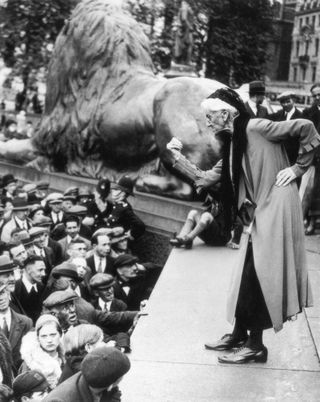
Despard was the Anglo-Irish founder of the Women’s Freedom League who campaigned passionately for the rights of women, the poor and the oppressed. A Guardian article written in 1924 to mark Mrs Despard's 79th birthday said that ‘never was there a more valiant soul, nor one more quick in sympathy for people who are poor or oppressed or unhappy. She was inevitably a leader and sufferer in the suffrage campaign. It used to be said that the London police always disliked having to intervene at demonstrations in which she took part because she took all the risks there were, and they were always afraid that she would break.’
Marie Claire Newsletter
Celebrity news, beauty, fashion advice, and fascinating features, delivered straight to your inbox!
But, the article went on, 'the appearance of physical fragility was combined with one of spiritual force.’ Here she is in the 1930s - when she was in her late eighties - making an anti–fascist speech in Trafalgar Square.
Rose Lamartine Yates
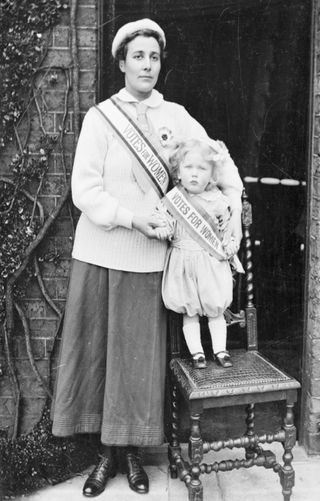
Yates is pictured here with her son Paul in 1910. When Paul was eight months old Yates was arrested, charged with obstruction and imprisoned for a month, attracting criticism in the press for ‘abandoning’ her child. She and her husband Thomas – also a passionate suffragist who defended her in court – turned their house in Merton into a refuge for suffragettes to recuperate after time in prison.
Yates played a key role in fighting for a women’s right to vote, but she would also go on to campaign for equal pay, better public housing and the provision of nursery education.
Daisy and Una Dugdale
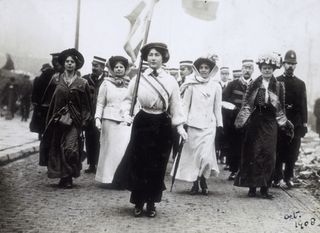
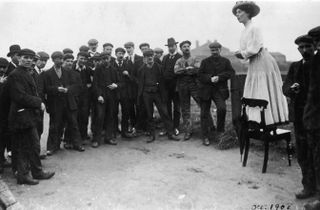
Sisters Daisy (top) and Una were both key players in the suffragette movement. In 1912 Una caused a scandal by refusing to repeat the word 'obey' in her marriage vows to Victor Duval, founder of the Men's Political Union For Women's Enfranchisement (the original #HeForShe).
Charlotte Marsh

In 1909 Marsh was given two months hard labour after climbing onto the roof of Bingley Hall, Birmingham to fling tiles on police and Prime Minister Herbert Asquith’s car as he arrived to make a speech. In prison Marsh was force fed 139 times.
During the First World War she became a personal chauffeur to then Chancellor of the Exchequer Lloyd George. Here she is seen starting up a car in 1915 – the picture was used to show the work women were doing while the men were away at war.
Emily Wilding Davison
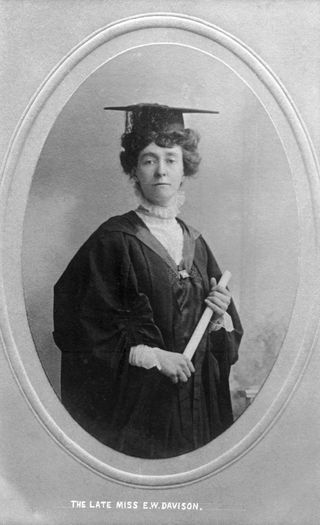
No-one sacrificed more for women's suffrage than Emily Wilding Davison. On 4th June 1913 she travelled to Epsom racecourse where the Derby was taking place. When King George V's horse Anmer came around the bend of the track Davison ran out in front of it - footage appears to show her trying to attach a purple and green suffragette flag to the horse's reins - and was knocked down.
She died a few days later after being transferred to hospital. As she lay dying Davison was sent hate mail, the Daily Express described her as 'a well-known malignant suffragette', while The Mirror wrote, 'it was quite evident that her condition was serious, otherwise many of the crowd would have fulfilled their evident desire to lynch her.'
But the WSPU hailed Davison as a martyr and 5000 women joined her funeral procession, with another 50,000 lining the streets to pay their respects.
In a paper Davison had written before her death that was published in 1914, she said: 'To lay down life for friends, that is glorious, selfless, inspiring! But to re-enact the tragedy of Calvary for generations yet unborn, that is the last consummate sacrifice of the Militant.'
The Pankhursts: Emmeline, Christabel, Sylvia and Adela
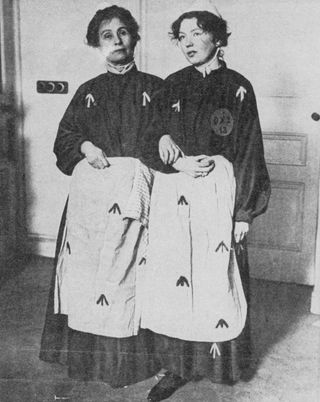
A suffragette family to be reckoned with, Emmeline and her daughters Christabel, Sylvia and Adela were the leaders and standard-bearers of the suffragette movement, frequently leading by example and putting themselves in the firing line.
Above is a shot of Emmeline and Christabel in prison uniform during a spell inside Holloway, and here's Sylvia being arrested by police in Trafalgar Square:
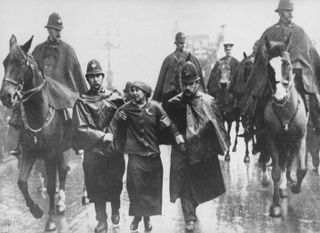
'You must make women count as much as men; you must have an equal standard of morals; and the only way to enforce that is through giving women political power so that you can get that equal moral standard registered in the laws of the country. It is the only way' wrote Emmeline Pankhurst, who believed that only violent protest would make the government listen.
'One baby is a patient baby, and waits indefinitely until its mother is ready to feed it. The other baby is an impatient baby and cries lustily, screams and kicks and makes everybody unpleasant until it is fed. Well, we know perfectly well which baby is attended to first. That is the whole history of politics.'
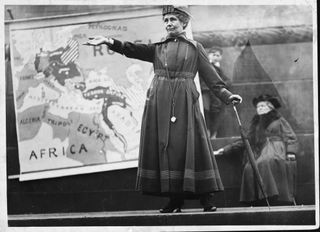
Thanks to the relentless work of the Pankhursts and their foot soldiers, in 1918 women over the age of 30 (with specific property rights) were granted the vote.
British women would not gain full equal voting rights to men until 1928.
-
 Zendaya's reaction to awkward kissing question during Challengers interview has gone viral
Zendaya's reaction to awkward kissing question during Challengers interview has gone viral'Uncomfortable' doesn't begin to cover it
By Iris Goldsztajn
-
 Prince William feels 'immense responsibility' amid Kate and Charles cancer diagnoses
Prince William feels 'immense responsibility' amid Kate and Charles cancer diagnosesHe has a lot on his plate
By Iris Goldsztajn
-
 Taylor Swift just teased a 'timetable' for her new album release
Taylor Swift just teased a 'timetable' for her new album releaseThe wait is torture
By Iris Goldsztajn